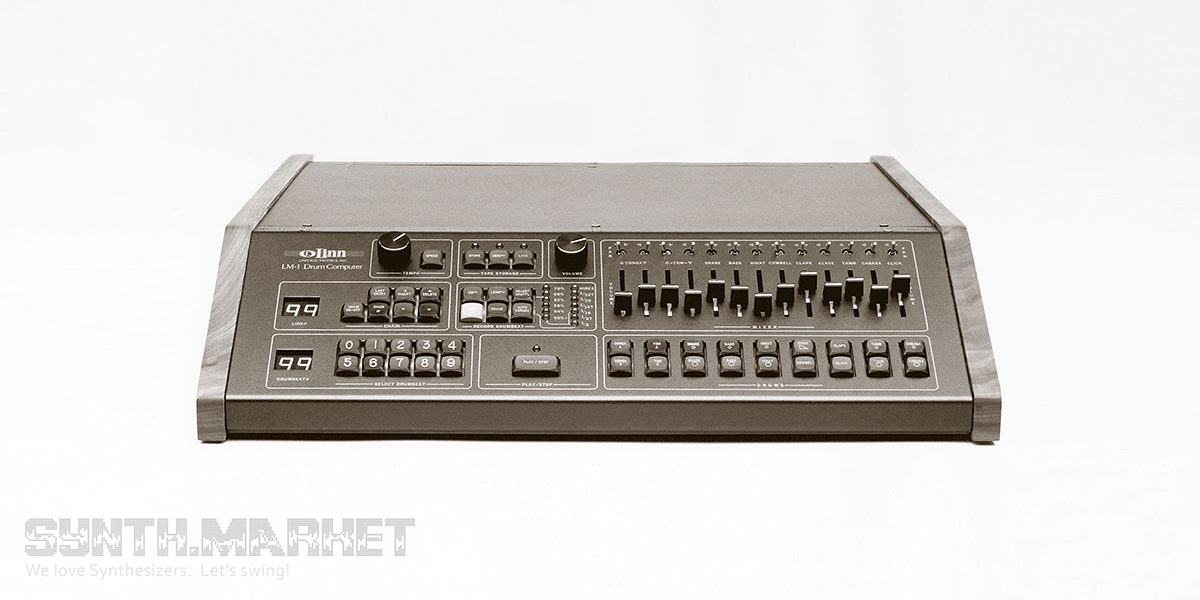The legendary LM-1 Drum Computer by Roger Linn became the first digital drum machine capable of reproducing samples of real drums. Its excellent sound helped to revise and change the music of the 80's.
The LM-1 is the first digital drum machine to incorporate samples of actual drum sounds. As the sampling technology was pretty primitive back then, so the sounds that this instrument generates are much more electronic sounding than an acoustic drum kit.
The sampled drum sounds are stored on EPROM chips. If you have the right EPROM burner and replacement EPROMs, you can sample your own sounds or copy existing sounds onto chips that can be installed in this machine.
The quantization section offers a great shuffle mode to humanize programmed rhythms and give it variable swing. There are faders and pan switches for each sound.
This piece is not only a great piece of electronic music history, it's also an incredible sounding box. The library of live percussion includes: kick, snare, hi-hat, kabasa, tambourine, 2 volumes, 2 congas, cowbell, clave and clap. The absence of cymbals upsets a bit (its successor LinnDrum got them added). There's the pitch control over all it's sounds, so you can turn a snare into an explosion for instance. Each of them has an output for further individual processing.
The drum machine has a stunning pattern sequencer allowing up to 100 patches. Patterns can be played in real time, or in step mode. Convenient playback is provided thanks to the innovative swing and quantization functions.
LM-1 is a cult drum machine that has surely taken its niche in the music industry of the 80s. It was used by such musicians as Phil Collins, Thompson Twins, Stevie Wonder, Gary Numan, Depeche Mode, The Human League, Jean-Michel Jarre, Vangelis, John Carpenter, Todd Rundgren, Prince, and The Art of Noise.










